A year after a crippling fire, one of the Coast Guard's most important ships is on a rare trip around North America

Last year, US Coast Guard icebreaker Healy was crippled by a fire in one of its propulsion motors.
After replacing that motor, Healy is on a rare trip through the Northwest Passage and around North America.
The trip comes as climate change and geopolitical competition make the Arctic increasingly busy.
In August 2020, the US Coast Guard icebreaker Healy was forced to return to its homeport in Seattle after a fire in one of its main propulsion motors as it sailed toward the Arctic.
The crew in the engine room saw an alarm for a stator earth fault — "one we had never seen before," Lt. Cmdr. Matthew Stevick, Healy's engineer officer, said during a tour of the ship in Baltimore in October.
While crew members investigated in another part of the engine, personnel in the engine space looking over the propulsion motor saw the "arcing and sparking" of an electrical fire.

"They called up the watch stander here. He then secured the power from the motor and called away for general emergency to combat that fire," Stevick said.
Healy has a team and doctrine to fight high-voltage fires, and it was quickly extinguished — "You turn power off to it, it stops being on fire," Stevick said — but it forced the icebreaker into port for months as the motor was replaced with a spare weighing 100 tons.
Healy, a medium icebreaker, is one of only two Coast Guard icebreakers that can operate in polar regions.
It and the heavy icebreaker Polar Star are both aging — Healy is now 22 years old, and Polar Star, which faces its own mechanical challenges, was first commissioned nearly 46 years ago.

While the Coast Guard's icebreaker inventory has remained static, demand on it is growing.
With the Arctic becoming increasingly accessible, both ships have been called on conduct Coast Guard missions and provide a visible US presence in a strategically important region.
"Our Coast Guard presence in the high-latitude areas, in the Arctic communities, and on the international councils really has the ability to shape things," Coast Guard Commandant Adm. Karl Schultz said in February.
'A big deal for us'
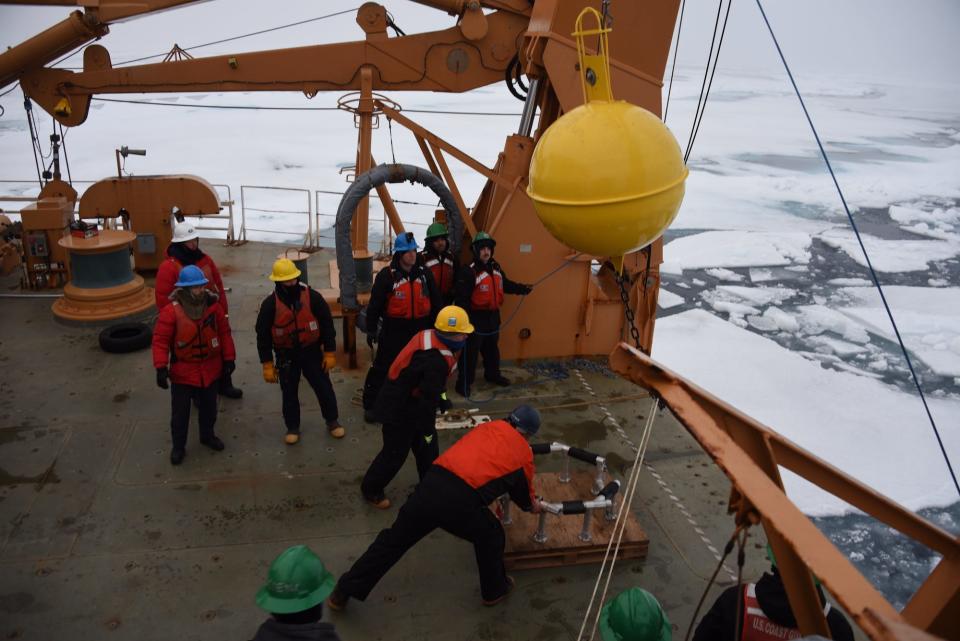
On July 10, Healy and its new motor, one of four it has, departed again for the Arctic, this time to sail through the Northwest Passage — its first such trip since 2005 — down the East Coast, through the Panama Canal, and back to Seattle.
After transiting the Bering Strait, the crew spotted ice for the first time on July 28 and trained in the Chukchi Sea in early August. By that point, Healy was north of land-based infrastructure that could support it.
"There are no piers for a ship that draws what we draw, over 30 feet," Healy's commanding officer, Capt. Kenneth Boda, said in Baltimore in a reference to the ship's draft.
"We always have the ability to fly things out to us, either helicopter or a fixed-wing airdrop. That could be a little sporty at times," Boda added. "So we're never totally on our own, but we're definitely off the grid."
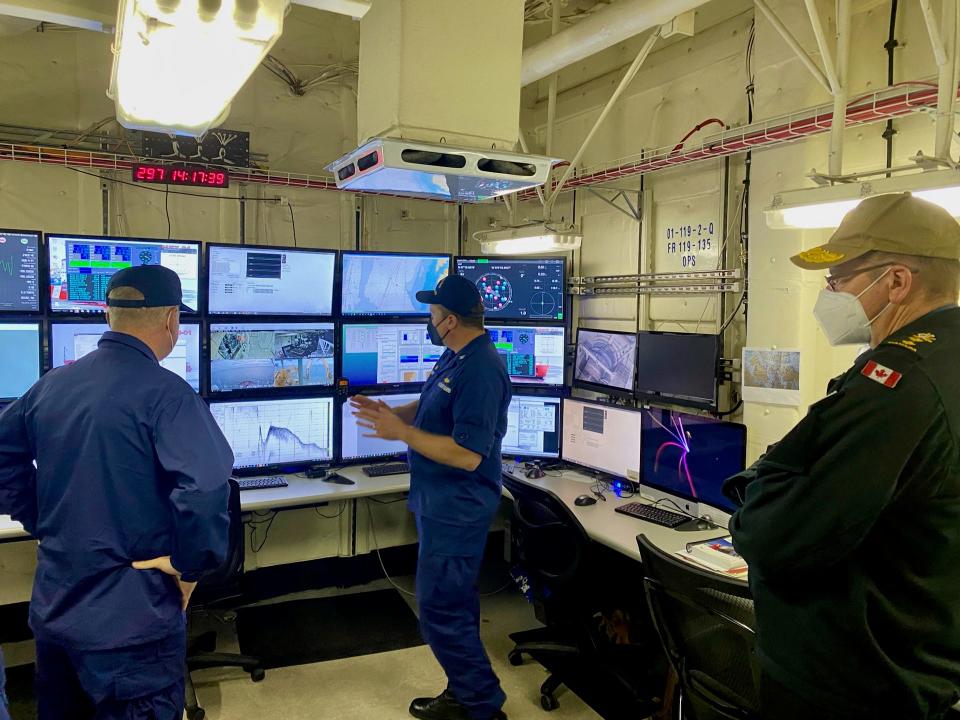
Healy "was built as a science platform," Boda said, and the National Science Foundation spent months getting its Conductivity, Temperature, and Depth system, its Multi-beam Sonar, and its Science Seawater System ready for the voyage.
The icebreaker continued its scientific work in the Chukchi Sea in August. Much of its oceanographic research is focused on the effects of climate change in the Arctic. Its crew recovered moorings that had been collecting information from the sea for years and gathered other data about the environment.
"We got in pretty close to Greenland because our scientists were measuring the meltwater that was coming off the Greenland ice sheet," Boda said.
In early September, Healy trained in western Canada with the Canadian coast guard and Canadian Rangers, a military unit composed of Indigenous peoples.

"Collaboration with our partners, particularly Canada, being our close ally to the north, was really a big thing for our Arctic strategy," Boda said. "Whenever we get the chance to implement that and work with them, that's a big deal for us."
The transit didn't generate much fanfare in Canada, but the by-the-book manner in which the US did it eased concerns piqued in 2019, when then-Secretary of State Mike Pompeo described Canadian claims over the Northwest Passage as "illegitimate," inflaming a diplomatic dispute settled by a 1988 agreement.
"The fact that we had the Healy going through, consent was requested and subsequently granted, as per the agreement, I think there was a sense of relief, that 'OK, we're back to normal,'" Rob Huebert, a professor and Arctic expert at the University of Calgary, told Insider.
The secret to icebreaking

This was only Healy's third Northwest Passage transit since it was commissioned and its first sailing eastward. While Healy can break up to 8 feet of ice, it wasn't seriously tested this time.
"We saw a lot of ice on the Beaufort Sea," west of Canada, but much of it was older and soft, said Boda, a veteran of five Arctic trips. While collecting moorings in the southern Beaufort Sea, the crew didn't spot any ice floes they could disembark on for ice liberty, during which they can walk around, play games, and take photos.
"We were really hoping to do ice liberty," Boda said. "That was kind of a disappointment that we couldn't find one."
Winds in the region pushed the ice south as Healy transited, allowing it to "skirt up around," Boda said. "We didn't really have to break too much ice to get through."

But the ice it did break was memorable.
"It sounds like a freight train," Ensign Robert Doherty, an administrative officer, said in Baltimore. "You get used to it, though, with the constant vibration of the ship."
The National Ice Center helped the crew track the ice conditions and movement, but the goal isn't necessarily to break ice.
"You want to get from one point to another," Capt. Jessica Worst, Healy's executive officer, said in Baltimore. "You really want to find what we call 'open leads,' so open water where the ice is kind of broken or cracked."

Following leads may mean a longer route, but it's usually quicker since the ship can sail faster, Worst said.
First-year ice is generally easier to break. Multi-year ice is "stiffer" and can bring the ship to a halt.
"At that point, you just go astern for a couple ship lengths, get a little bit of distance, and then you just come ahead again, and you just keep hitting it — in different spots is the secret," Worst said.
In the video below, Ensign Valarie Hines, an ice pilot, guides Healy through Arctic ice in the Beaufort Sea on September 1, 2021:
"There were parts of the transit when we actually got on to some heavy ice" that was more solid on one side, Worst said. "We just rode right up on it and heeled over probably, I don't know, maybe 5, 10 degrees."
The ship's regular radar is effective in waters with patchy ice, but the ship also has a radar for ice-filled waters. Healy can be steered from consoles on either side of its main bridge, providing different vantages of the ice.
Healy's "aloft conn" allows crew members to go another 20 feet above the main bridge and steer the ship with a better view of the bow.

Healy is outfitted with what operations officer Cmdr. Philip Baxa called the "best late 1990s icebreaking technology you can buy," and updates are ongoing.
"My support staff is constantly looking at systems on board that are obsolete and need [to be] upgraded," Stevick said, adding that the service is looking ahead as much as five to 10 years to determine what can be repaired and what needs to be replaced.
Baxa said Healy's GPS was recently updated and its radars will be in coming years.
That radar painted "a very good picture" at night off Greenland, as Healy sailed by a "breathtaking" number of icebergs, Boda said.
"That was one of the things that made me nervous, I think, trying to go to sleep knowing that we were in iceberg alley," Boda said. "Sea ice is no problem for us. Icebergs, the glacial ice, [are] much harder. We wouldn't try and hit them."
'A different way of looking at it'
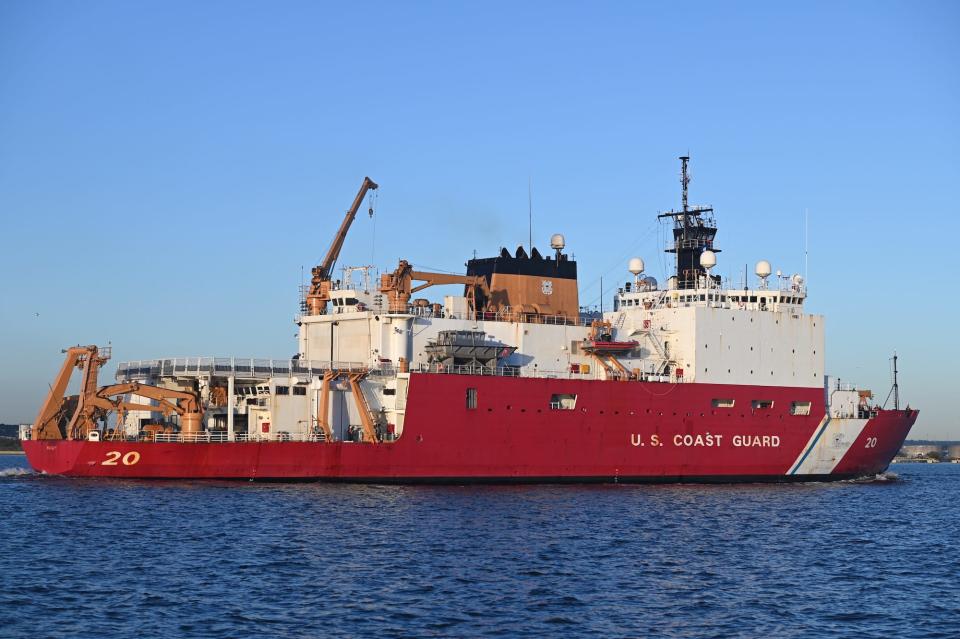
Healy emerged from the Northwest Passage in late September and continued its scientific work around eastern Canada and Greenland before heading south. It left Baltimore in late October and sailed for the Panama Canal, transiting it days later.
Throughout the trip, Healy's systems have been "fully monitoring everything we possibly could" on the new motor, Stevick said in Baltimore.
"We did do sea trials following the replacement to make sure it would withstand everything we were going to throw at it, and I'll be honest, I did not sleep well the first couple of nights we were in ice," but the new motor "worked great," Stevick added.
Healy and Polar Star will be the US's sole icebreakers until the mid-2020s, when the service's new heavy icebreakers arrive. A contract for the first of three polar security cutters, as the ships are known, was awarded in 2019. Schultz, the commandant, said in June that construction would begin "in the coming months."
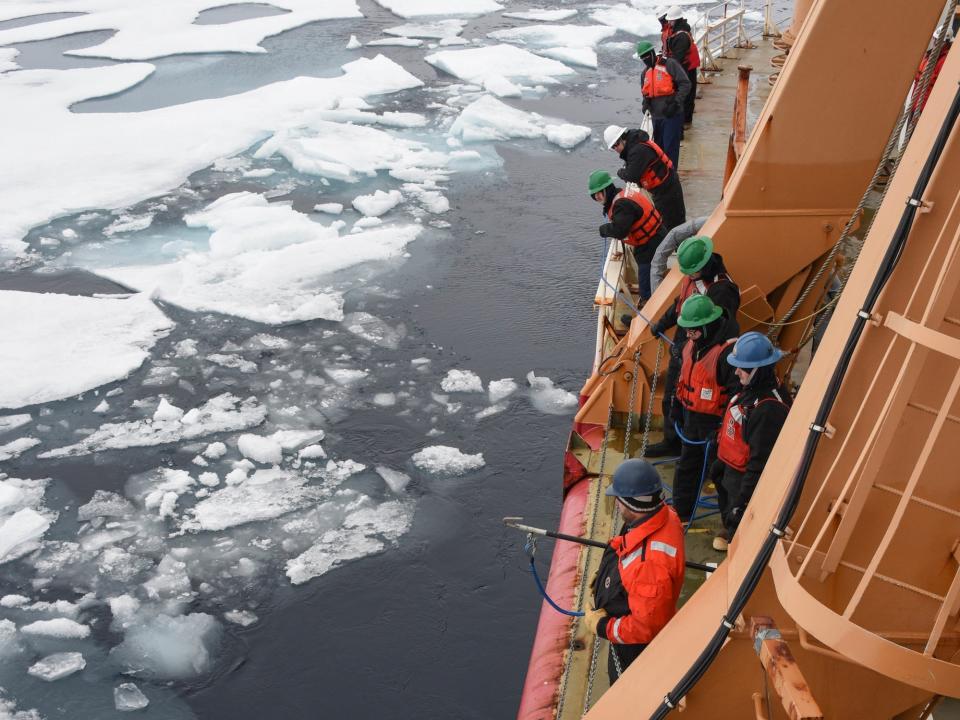
After building them, the Coast Guard will have to man them. "One of the challenges is getting enough folks that have that icebreaking experience to actually crew them," Worst said.
Healy and Polar Star have both sailed with officers from the US Navy and allied navies and with cadets from the Coast Guard and Merchant Marine academies — part of efforts to rebuild Arctic proficiency.
"The folks you see today are likely going to be the folks that are going to be stationed aboard the polar security cutters when we actually get those," Worst said.
Boda, with years of experience in the Arctic and Antarctic, helped set the requirements for the new icebreakers, which will operate in both regions.
The new ships will be more efficient thanks to technological advances, such as a hull shape "optimized to break ice, so you don't need as much horsepower in the polar security cutter to break the same amount of ice," Boda said.
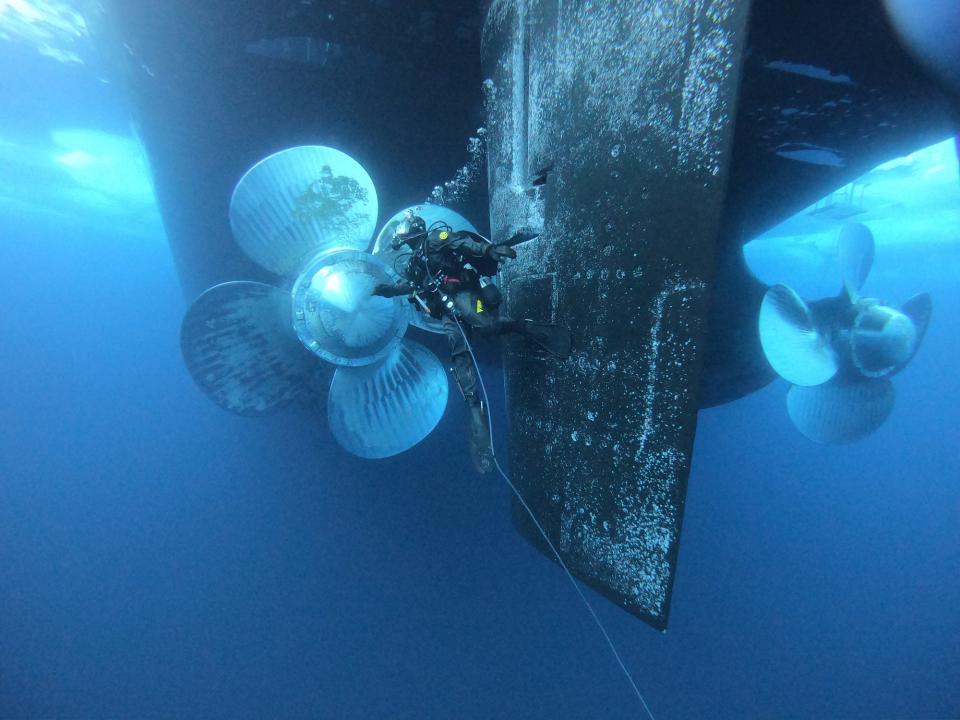
Propellers that rotate, called azimuth impulsers, will replace rudders, which are "always kind of the weak spot on an icebreaker" as they're susceptible to damage, and make the ships "much more maneuverable," Boda said.
Climate change means vessel traffic in the Arctic is increasing, Boda said, but it's not all cargo ships and fishing boats.
Tensions with Russia and China have spilled into the Arctic. Russia has expanding its military capabilities there, including construction of armed "combat icebreakers," and China has made clear its polar ambitions, designating itself a "near-Arctic state" and conducting scientific expeditions there and in the Antarctic.
The Coast Guard's new icebreakers will have many of the same scientific resources as the current ones, "but we're also looking at armament," Boda said, "which is a different way of looking at it."
Read the original article on Business Insider

